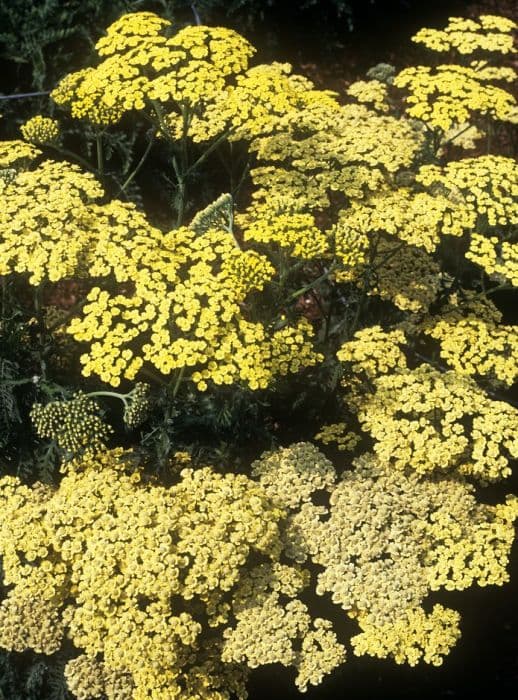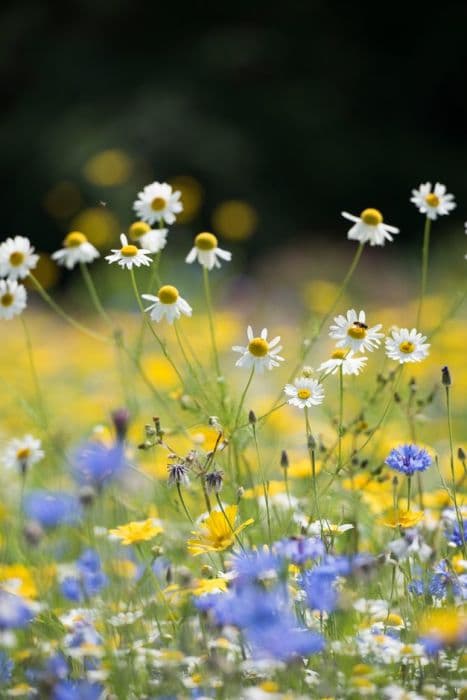Dahlia Dahlia 'Tartarus' (P)

ABOUT
Dahlia 'Tartarus' is a captivating plant known for its stunning flowers that are a focal point in any garden. The blooms are characterized by their deep red, almost burgundy, petals which can appear velvety in texture. These petals are often arranged in a dense, intricate pattern that gives the flower a full, rounded appearance. The flowers are composed of multiple layers with the outermost petals being larger and serving as a backdrop to the smaller, more detailed inner petals that form a spiraling pattern towards the flower's center. Each petal has slightly ruffled edges, adding to the dramatic and lush look of the bloom. The center of the flower typically houses a contrasting array of smaller petals and reproductive parts, which may be visible depending on the stage of the bloom. The foliage that accompanies these flowers is typically bright green, providing an excellent contrast against the rich color of the petals. Leaves tend to be lance-shaped with pointed tips and have a toothed edge, adding a delicate texture to the overall appearance of the plant. Dahlia 'Tartarus' creates an impressive display whether planted in groups or as a standalone specimen, and its showy flowers are irresistible to garden enthusiasts and pollinators alike. The plant's vivid and head-turning flowers make it highly sought after for decorative purposes, both in gardens and as cut flowers for arrangements. Overall, Dahlia 'Tartarus' exudes elegance and drama with its deeply colored, lush blooms and vibrant green foliage.
About this plant
 Names
NamesSynonyms
Dahlia, Garden Dahlia.
Common names
Dahlia 'Tartarus'
 Characteristics
CharacteristicsLife cycle
Perennials
Foliage type
Deciduous
Color of leaves
Green
Flower color
Varies
Height
4 feet (1.2 meters)
Spread
2 feet (0.6 meters)
Plant type
Bulb
Hardiness zones
8
Native area
Mexico
Benefits
 General Benefits
General Benefits- Attracts Pollinators: The Dahlia 'Tartarus' is known for attracting bees, butterflies, and other beneficial insects to your garden, aiding in pollination.
- Ornamental Value: This variety offers striking blooms that can enhance the aesthetic appeal of any landscape or garden setting.
- Cut Flowers: The flowers are long-lasting when cut and are popular in floral arrangements and bouquets.
- Variety of Uses: Dahlias are versatile and can be planted in flower beds, borders, or containers, providing flexibility in garden design.
- Colorful Displays: They produce vibrant, colorful flowers that can be used to create stunning visual displays in the garden.
- Ease of Growth: Dahlias like 'Tartarus' are relatively easy to grow with the right conditions, making them suitable for gardeners of varying skill levels.
 Medical Properties
Medical PropertiesThis plant is not used for medical purposes.
 Air-purifying Qualities
Air-purifying QualitiesThis plant is not specifically known for air purifying qualities.
 Other Uses
Other Uses- Dahlia petals can be used to make a natural dye for textiles, imparting hues of yellow or orange depending on the mordant used.
- The hollow stems of dahlia plants can serve as protective casing for delicate stems of other plants during transport.
- Dahlia blooms can be used as a source of inspiration for artists and designers, influencing patterns in fashion and home decor.
- Dahlias can be planted as trap crops in gardens to distract pests like snails and aphids from more valuable plants.
- The geometric patterns of dahlia flowers can be studied in mathematics and design classes to explain principles of symmetry and fractals.
- Dahlia flowers, due to their varied and vibrant colors, can be used in color therapy sessions to boost mood and promote well-being.
- Edible varieties of dahlias can provide a source of sweet-tasting tubers that can be used as a substitute for other root vegetables in cooking.
- Dahlia flowers can be pressed and included in handcrafted paper, adding texture and visual appeal to the final product.
- During festive occasions, dahlia flowers can be used to create natural confetti or table decorations that are biodegradable and eco-friendly.
- Larger dahlia flowers can be used as natural bowls for serving dips or holding small items at eco-conscious events.
Interesting Facts
 Feng Shui
Feng ShuiThe Dahlia is not used in Feng Shui practice.
 Zodiac Sign Compitability
Zodiac Sign CompitabilityThe Dahlia is not used in astrology practice.
 Plant Symbolism
Plant Symbolism- Elegance and Dignity: Dahlias often represent a lasting grace and the ability to stand out from the crowd with poise and sophistication, due to their intricate petals and variety of colors.
- Commitment and Bond: With their multitude of petals tightly arranged, dahlias can symbolize a strong commitment or bond, making them a common gift between partners or friends.
- Change and Diversity: Dahlias come in many shapes, sizes, and colors, which can symbolize embracing change and diversity in life.
- Innovation and Adventure: As dahlias are varied and sometimes unexpected in their forms, they can also represent an innovative spirit or an inclination towards adventure.
- Warning and Betrayal: In the Victorian language of flowers, dahlias were sometimes associated with betrayal or a warning of change due to their explosive variety of appearances and colors.
 Water
WaterDahlias require consistent moisture, so water them deeply once or twice a week, providing about one to two inches of water each time. It's best to water the plants in the morning so that the foliage has time to dry before nightfall, reducing the risk of fungal diseases. Avoid overhead watering to minimize wet leaves; instead, use a drip system or soaker hose to deliver water directly to the base of the plant. During hot, dry periods, you may need to water more frequently, especially if the dahlias are in containers. Always check the top inch of soil before watering; if it's dry to the touch, it's time to water.
 Light
LightDahlias thrive in full sun, which means they need at least six to eight hours of direct sunlight each day. The ideal spot for Dahlias is an area that receives morning sunlight and some partial shade in the afternoon, especially in hot climates. Avoid placing them in full shade as it can result in leggy growth and poor flowering.
 Temperature
TemperatureDahlias prefer a temperature range of 60 to 75 degrees Fahrenheit and can survive minimal dips down to 50 degrees Fahrenheit. They are not frost-tolerant and should be protected or lifted from the ground if temperatures are expected to fall below this range. The ideal temperature conditions for Dahlias is daytime temperatures around 75 degrees and cooler night temperatures, as this encourages robust growth and flowering.
 Pruning
PruningPruning Dahlias encourages more vigorous growth and better blooming. Pinch back the new growth when the plant is about a foot tall to promote bushier plants and more flowers. Deadhead spent blooms regularly to keep the plant producing new flowers. The best time for major pruning is just before the new growth starts in the spring.
 Cleaning
CleaningAs needed
 Soil
SoilDahlias prefer a well-draining soil mix with plenty of organic matter; a blend of two parts garden soil, one part peat moss, and one part perlite is ideal. The pH should be slightly acidic to neutral, ranging from 6.5 to 7.0.
 Repotting
RepottingDahlias should be repotted annually, usually in the spring after the danger of frost has passed but before new growth begins in earnest.
 Humidity & Misting
Humidity & MistingDahlias do well with moderate humidity levels but do not require any specific humidity adjustments as they are quite adaptable to typical outdoor conditions.
 Suitable locations
Suitable locationsIndoor
Provide bright light, consistent moisture, and room to grow for indoors.
Outdoor
Plant in full sun, rich soil, protect from intense heat.
Hardiness zone
8-11 USDA
 Life cycle
Life cycleThe life of Dahlia 'Tartarus' starts with seed germination, which occurs in warm, moist soil conditions. Growth continues with the development of a tuberous root system and vegetative growth of stems and leaves in the spring. As the plant matures during the warmer months, it begins to produce distinctive and vibrant flowers that can vary in color and size. After flowering, the plant sets seed, and as temperatures drop in the fall, the aerial parts die back, while the tubers enter a period of dormancy through the winter. The next spring, these tubers can be divided and replanted to produce new plants. These tubers can also be stored over winter and replanted, starting the cycle anew, if the climate is not conducive to in-ground winter survival.
 Propogation
PropogationPropogation time
Late winter-early spring
The most popular method of propagation for the Dahlia 'Tartarus', commonly known as Dahlia, is through division. This method is typically performed in the spring just before the new growth begins. To propagate by division, carefully unearth the tuberous roots after the foliage has been killed by frost and the plant has been cut back. The clump should be allowed to dry for a day or two. Using a sharp knife, divide the clump into sections, making sure that each division has at least one eye, which is a point on the tuber from which new growth will emerge. Cuttings should be dipped in fungicide to prevent rot and then allowed to dry and callous over for a day before planting. Replant the divisions about 6 to 8 inches deep (15 to 20 centimeters) and water them well to start the development of new Dahlia plants.









